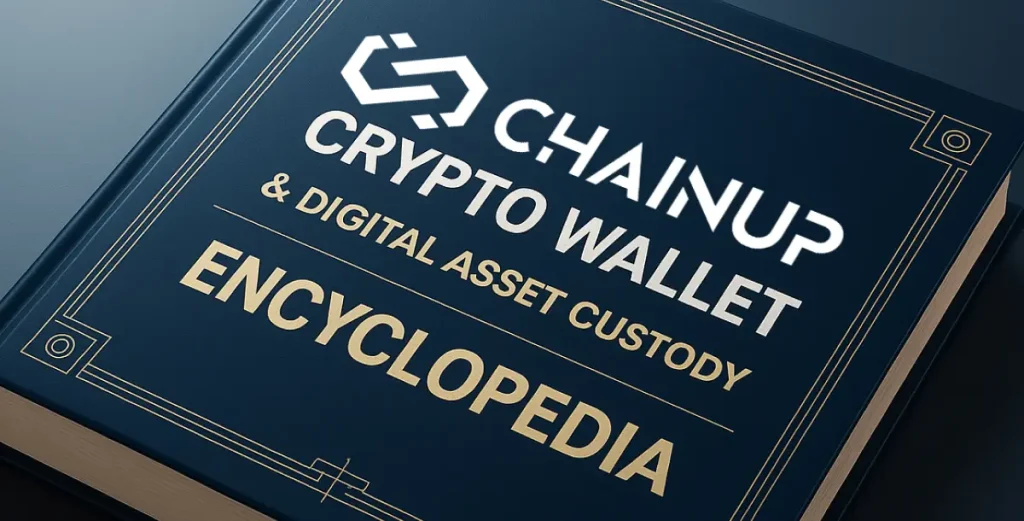Stablecoins— a $150+ billion market and growing —are fast becoming the financial plumbing of crypto markets. Pegged to fiat currencies or other stable assets, they enable real-time settlement, offer dollar-denominated liquidity without touching the banking system, and bridge on-chain and off-chain finance. From trading pairs and DeFi lending to global remittances and tokenized assets, stablecoins are the base layer for digital value transfer.
But with scale comes scrutiny.
Policymakers around the world are racing to build legal frameworks to govern these digital dollars. For businesses operating in or around stablecoin ecosystems, staying ahead of regulation is not optional—it’s survival.
What Are Stablecoins?
Stablecoins are digital assets designed to maintain a stable value, typically by being pegged 1:1 to a fiat currency (most commonly the US dollar) or to other predictable assets (e.g., commodities, other cryptocurrencies, or algorithmic controls). Their core purpose is to reduce volatility while retaining the programmability and borderless nature of crypto.
Different types of stablecoins employ unique mechanisms to maintain their peg:
Type | Peg Mechanism | Example |
Fiat-backed | Fully collateralized by fiat assets | USDC, USDT, GUSD |
Crypto-backed | Overcollateralized with crypto | DAI (ETH-based) |
Algorithmic | Stabilized by code and incentives | Frax (partially), past Terra |
Commodity-backed | Pegged to gold or real-world goods | PAXG (gold), Tether Gold |
Stablecoins are essential because they enable crypto-native financial products—without the volatility risk of traditional crypto assets.
Why Regulators Care About Stablecoins
Stablecoins are not just crypto assets—they’re increasingly used like digital cash or e-money, straddling the worlds of decentralized finance and traditional payments. This dual nature—programmable like crypto, but trusted like fiat—makes them valuable to users and businesses.
But it also creates regulatory headaches, especially as stablecoins grow in volume, utility, and global reach.
Key regulatory concerns include:
Reserve Adequacy & Transparency
Stablecoins are only as safe as the assets backing them. If a stablecoin claims to be worth $1, it must hold $1 of liquid, high-quality assets for every token issued. Regulators want to know:
- Are the reserves truly 1:1 backed?
- Are they held in safe, liquid assets (e.g., cash, T-bills)?
- Are those reserves segregated, audited, and disclosed regularly?
Failures like TerraUSD and reserve opacity scandals have driven calls for stricter audit requirements, real-time attestations, and tighter asset-quality rules.
Redemption Rights & Liquidity
Users need to trust they can redeem stablecoins at par ($1 = $1)—even during stress events or market volatility. Regulators are asking:
- Can users redeem on demand, without delays or hidden fees?
- What happens in a run scenario (i.e., mass redemptions)?
- Are redemption processes clear and legally enforceable?
This concern mirrors traditional e-money regulation, where issuers must maintain redemption guarantees and liquidity buffers.
Systemic Risk & Financial Stability
As stablecoins grow into systemically important payment instruments, they could impact financial stability, especially if they integrate with:
- Banks or money market funds
- Global merchant networks or card rails
- Public or private settlement systems
A depeg event or reserve mismatch at a major issuer could cause broader panic, market disruption, or contagion—similar to a bank run.
Central banks and financial watchdogs (e.g., the Federal Reserve, BIS, ECB) now monitor stablecoins as potential non-bank financial intermediaries (NBFIs).
Consumer Protection & Fraud
With millions of retail users and growing adoption in remittances, merchant payments, and savings products, stablecoins are coming under consumer protection laws. Key issues:
- Misleading marketing (e.g., “fully backed” when reserves are partial)
- Inaccessible or delayed redemptions
- Loss of funds due to insolvency, poor governance, or fraud
Regulators want stablecoin issuers to disclose risks clearly, hold insurance or guarantees, and follow capital and governance standards like licensed financial entities.
Illicit Finance, Sanctions & AML
Stablecoins move value quickly and globally, often outside traditional banking rails. This opens the door to sanctions evasion, money laundering, and terrorist financing, particularly through:
- Self-hosted wallets with weak KYC controls
- Cross-chain bridges that obscure transaction trails
- Offshore issuers with limited oversight
Regulators are now enforcing Travel Rule compliance on stablecoin transfers, pushing for blockchain analytics integration, and expanding KYC/AML standards for both issuers and platforms.
Regulatory Arbitrage & Jurisdictional Risk
Stablecoin issuers often register in jurisdictions with weak oversight, allowing them to undercut more regulated competitors. This “race to the bottom” creates unfair conditions and elevates systemic risk.
As a result, major markets like the EU (under MiCA), US (under draft stablecoin bills), Singapore (under PSN02), and Japan are now requiring local registration, audits, and reporting—and increasingly treating stablecoins as e-money or payment instruments, not just crypto tokens.
Because of this, regulators are pushing stablecoins into frameworks more like electronic money (e‑money) or payment systems rather than speculative tokens.
Current & Emerging Regulatory Frameworks
These concerns are the direct drivers of a global regulatory response, with different regions adopting frameworks tailored to their financial systems. Stablecoin rules are converging toward payments/e-money style oversight: 1:1 high-quality reserves, redemption at par, audited disclosures, licensing, and AML/Travel Rule controls.
The timing and strictness still vary by region, but the direction is clear: if you issue or integrate stablecoins, expect bank-grade obligations, not “crypto-only” rules.
United States: The GENIUS Act (2025)
The U.S. recently passed its first federal law specifically targeting stablecoins: the Guiding and Establishing National Innovation for U.S. Stablecoins Act (GENIUS Act), signed into law on July 18, 2025. This makes U.S. the latest major economy to formalize its stablecoin regulations.
Highlights:
- The Act establishes a federal regulatory system, requiring 100% reserve baking with liquid assets like U.S. dollars or short-term Treasuries.
- Reserve assets must be segregated and not commingled with issuer’s own funds (with limited exceptions)
- Issuers must have technical ability to seize, freeze or burn stablecoins when legally required.
- Holders of stablecoins gain withdrawal priority over other creditors in insolvency.
- The Act prohibits stablecoin issuers from promising interest or yield to holders just for holding stablecoins.
The GENIUS Act essentially treats payment stablecoins like regulated financial instruments (akin to e‑money) and shifts oversight into banking/regulatory domains.
It is due to take effect either 120 days after implementing rules are issued or by January 18, 2027, whichever comes first.
Until then, stablecoin issuers and intermediaries operate in a partly ambiguous environment: state money transmitter laws, bank rules, and existing financial statutes fill the gaps.
European Union: MiCA & Token Categories
Under the EU, the Markets in Crypto-Assets Regulation (MiCA) is the leading crypto asset law, and stablecoins are categorized under:
- E‑Money Tokens (EMT) — stablecoins pegged to a single fiat currency (e.g. euro)
- Asset‑Referenced Tokens (ART) — tokens backed by a basket of assets or collateral including e.g. fiat, commodities, crypto assets.
The MiCA regime became applicable for these token types around mid‑2024.
MiCA requires stablecoin issuers to maintain reserves, submit regular audits, adhere to disclosure obligations, and comply with redemption requirements.
Importantly, MiCA does not require separate classification of stablecoins beyond those token types—it treats them as subsets of tokens with specific rules.
In comparing U.S. and EU regimes, some key tensions are emerging: the U.S. designates “payment stablecoins” similarly to e‑money, while the EU already has an e‑money token concept.
Singapore — MAS Stablecoin Framework
The Monetary Authority of Singapore’s final framework applies to Single-Currency Stablecoins (SCS) pegged to SGD or a G10 currency. To use the “MAS-regulated stablecoin” label, issuers must be based in Singapore, maintain high-quality, low-risk reserves, meet redemption within set timelines, publish attestations, and comply with AML/Travel Rule obligations.
Hong Kong — Stablecoins Ordinance (2025)
Hong Kong’s Stablecoins Ordinance (passed May 21, 2025) established an Hong Kong Monetary Authority licensing regime for fiat-referenced stablecoin issuers. The regime, which started on August 1, 2025, sets requirements for reserve quality, redemption procedures, governance, and risk controls.
South Korea — Transitioning to a Won-Stablecoin Regime
Korea currently treats stablecoins under the Virtual Asset User Protection Act with no dedicated stablecoin law yet in force. However, policymakers are advancing proposals for won-denominated stablecoins, and the new Digital Asset Basic Act (DABA), passed in June 2025, signals a movement toward a bank-style issuance model and tighter controls on the distribution of foreign stablecoins.
Expect movement toward a bank-style issuance model and tighter controls on the distribution of foreign stablecoins (USDT/USDC). Plan for reserve, redemption, and disclosure rules aligned with payments oversight.
Japan — Payment Services Act (in force)
Since June 2023, Japan has been classifying certain stablecoins as “electronic payment instruments” under the Payment Services Act. Issuers are generally limited to licensed banks, trust companies, or registered fund transfer service providers, with stringent custody, disclosure, and AML controls.
Issuance/distribution must route through regulated financial entities; expect conservative asset rules and strong consumer-protection oversight.
Middle East — UAE (Dubai) & Bahrain Leading
- Dubai (UAE) — VARA Rulebooks: Dubai’s Virtual Assets Regulatory Authority defines Fiat-Referenced Virtual Assets (FRVA) and Asset-Referenced Virtual Assets (ARVA) as Category 1 issuances requiring licensing, pre-approval, whitepaper disclosures, and 100% backing with strict ongoing reporting.
- Bahrain — CBB Module SIO (2025): The Central Bank of Bahrain issued a dedicated Stablecoin Issuance & Offering module, permitting fiat-backed stablecoins (including BHD and USD) with licensing, reserve, and disclosure requirements.
The Gulf is positioning itself as a licensed-issuance hub with faster routes to approval than the West, but with bank-like reserve and reporting expectations.
Risks & Challenges for Issuers and Intermediaries
Even with frameworks in place, stablecoin operations face many risk vectors. As an operator or issuer, here are some of the pain points to watch:
Risk | Potential Impact |
Reserve Insufficiency / Mismatch | If reserves are illiquid or fall in value, it might compromise redemptions or trust. Auditing and transparency are critical. |
Liquidity Crunch in Stress | During market stress, redemptions may spike. Without strong liquidity buffers, issuers may not meet obligations. |
Regulatory Ambiguities & Retroactive Risk | Rulemaking will refine GENIUS, MiCA, and other laws. Gaps or inconsistent interpretations may lead to enforcement surprise. |
Technical Audits & Custody | As laws require issuer ability to freeze or seize tokens, technical governance, upgrade paths, and security become legally material.This includes tokens in both custodial and non-custodial wallets to comply with lawful orders. |
Cross‑jurisdiction conflicts | Issuance in one place but users in another triggers conflicting laws. The GENIUS Act, for instance, has an express extraterritorial rule, applying to any foreign issuer offering or selling stablecoins to a person in the U.S. |
User trust & reputation | Any perceived failure in backing or redemption causes reputational damage. Marketing claims must be precise (e.g. cannot claim FDIC or U.S. government backing) |
Interactions with DeFi & composability | If stablecoins are used in lending, collateral, or yield protocols, regulatory liability may stretch to complex financial behavior. For example, the GENIUS Act explicitly prohibits issuers from offering interest or yield on stablecoins solely for holding the asset. |
What Operators & Issuers Must Do Now
Roadmap for Preparation and Compliance
-
Early licensing strategy.
Map target jurisdictions and assess whether federal, state, or regional licensing is required, particularly under frameworks such as the GENIUS Act in the U.S. or MiCA in the EU. -
Reserve and liquidity controls.
Design reserve portfolios to be ultra-liquid and safe. Implement mechanisms to stress-test redemption demand and maintain confidence in redemption capabilities. -
Technical and governance infrastructure.
Develop technical capabilities to freeze, seize, or burn tokens upon lawful request, as required under frameworks like the GENIUS Act.
Establish robust upgrade paths, multisignature controls, auditor access, and transparent governance processes. -
Auditing, disclosures, and reporting.
Publish monthly reserve statements, independent reserve audits, redemption flow data, and stress-test results in compliance with applicable laws and regulatory expectations. -
Compliance and AML / Travel Rule integration.
Integrate systems for identity verification (KYC), transaction and sanctions screening, Travel Rule compliance, and suspicious activity reporting (SARs). -
Cross-border strategy.
Plan for extraterritorial regulatory obligations, such as U.S. requirements applying to foreign issuers serving U.S. users.
Consider structuring separate issuances per region to manage differing regulatory regimes. -
User communications and marketing compliance.
Ensure all user-facing materials are transparent and compliant.
Avoid misleading claims, and clearly disclose backing assets, redemption rights, regulatory status, and associated risks.
Do not imply or claim government backing unless it is explicitly provided. -
Industry engagement and rulemaking participation.
In jurisdictions such as the U.S., regulators (e.g., the Treasury under the GENIUS framework) are actively soliciting public comments on rulemaking.
Engage early with policymakers to influence regulatory design and stay ahead of compliance developments.
What This Means for Businesses and Traders
Stablecoin rules are shifting stablecoins from “crypto convenience” to regulated financial rails. That shift brings clearer paths to launch and partner with banks—alongside higher operating standards. If you issue, list, custody, or build on stablecoins, here’s how the new landscape changes your playbook:
More certainty for stablecoin-based products
As regimes formalize, you can design payments, lending, and trading flows against defined obligations (reserves, redemption SLAs, disclosures). Clear rules reduce legal ambiguity and shorten enterprise sales cycles with banks, PSPs, and merchants.
Higher compliance costs—but a stronger trust moat
Expect ongoing spend for audits/attestations, legal, reserve management, and capital buffers. The upside: credible compliance unlocks better banking, better counterparties, and larger ticket sizes. For B2B, the cost becomes a commercial differentiator, not just a burden.
Early compliance = trust premium
Issuers and platforms that meet the new standards first will win distribution and integrations (card networks, PSPs, corporate treasuries). Transparent reserves, fast redemptions, and clean marketing lift conversion and reduce churn.
Rising barriers to entry
Licensing, reserve quality rules, and operational controls will thin the field. Latecomers face higher capital needs, longer timelines, and tougher bank diligence. Partnerships (co-issuance, white-label) become the fastest route to market.
Stablecoins become core settlement rails
With payment-stablecoin frameworks, expect deeper bank and fintech integration, near-instant settlement windows, and 24/7 availability. That improves cash management, cross-border flows, and on/off-ramp UX—and pushes more dollar-denominated activity on-chain.
Action items for operators
- Map licenses for your target markets.
- Engineer 1:1 high-quality reserve programs with daily ops and monthly attestations.
- Build par-redemption SLAs and stress tests.
- Embed Travel Rule + sanctions end-to-end.
- Align disclosures and marketing to the rulebook—no implied guarantees.
Stablecoin regulation is raising the floor on safety and disclosure. If you invest early in compliance, you gain distribution, institutional trust, and durable margins; if you delay, you’ll compete on price without the partners you need.
Build a Compliant Digital Asset Ecosystem with ChainUp
As stablecoin regulations take shape, the ability to move fast and stay compliant will define the winners in this space.
ChainUp provides a comprehensive suite of solutions for businesses to launch, manage, and scale their digital asset operations across jurisdictions, while meeting key regulatory requirements like the Travel Rule, AML/KYC standards, and reporting obligations for various digital assets, including stablecoins.
Don’t navigate this complex landscape alone. Contact ChainUp to book a discovery call and secure your strategy for a regulated future




